Southport Village Voices
An E-Magazine by & for the Residents of Southport
Number 74, April 2016
|
|
|
|
|
|
|
|
Leaving the Reservation
|
Despite the loose talk about the prospect of snow on the first weekend in April, Spring is here; there are daffodils to prove it. It's time to venture beyond the familiar walkways of our village and explore the beaches and woods that make the Cape a walker's (or cyclist's) paradise.
The warming days of April and May are great for a stroll on the beaches of Falmouth, most of which, regrettably, will become inaccessible to non-residents between Memorial Day and Labor Day.
One of the best 'walking' beaches for those who don't want to (or can't) slog through deep sand is on Buzzard's Bay, near the end of Chapaquoit Road in West Falmouth. When the tide is out, the sand on this broad, gently sloped beach is firmly packed, making for very comfortable walking.
If you need a paved surface but want to be by the beach, try walking on the stretch of the Shining Sea Bike and Walking Trail that borders Nantucket Sound. On a sunny day, this is a glorious place to walk, and it's usually a little less windy than beaches that face west.
Venture a little farther out-- to the Cape Cod Museum of of Natural History on Route 6A in Brewster -- and take the beautiful John Wing Trail for a walk that combines woodlands, salt marshes and endless views of Cape Cod Bay. The trail and parking lots require museum membership, but you can find free parking and access from the Drummer Boy Park just west of the museum. See the museum website for directions.
One of the reasons we've all settled on Cape Cod is to enjoy its natural beauty. There's a lot of it nearby, and the cool sunny days of Spring are the perfect time for enjoying it. Happy trails!
-------------------------------------------
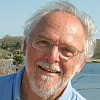
We're always looking for new Southport Village "Voices." If you have a story, an essay, a review, a poem, a memory, a photo or painting, etc. to share, please send
it along.
|
|
 |
|
|
|
SOUTHPORT PROFILE
an interview with Lynn & Bob Fulton
|
|
|  | |
Dee Mason at a century, plus one!
|  |
A few months ago we had the delightful opportunity to meet with some of the Southport Pioneers - the first 100 permanent residents of Southport - to discuss their early days here. In the course of our conversations, several people mentioned Dee Mason. As in "You have to meet Dee, she's really special, one of the Pioneers and still here in Southport at 101 years of age!"
Our interest in meeting the Pioneers, especially Dee, was to learn what we can from the Scouts ahead of us in Time. Having read Atul Gawande's Being Mortal, we were particularly interested in meeting someone of her advanced years who is still in charge of her life.
Edith Mason (known as Dee or DeeDee) was born on Valentine's Day, 1915, in Worcester. The family soon moved to Woonsocket, RI, where her father, an independent insurance agent, had more room for the kennels that housed his Saluki show dogs.
 |
|  |
The Salukis, "the best dogs ever!"
|
Dee's teachers in the local public schools encouraged her love of art, and she later took courses at the Rhode Island School of Design and developed a devotion to painting. Many of her works from over the years are displayed in her home, showing a remarkable range of media, style and subject. For a number of years, she focused her work on animals and birds and she's very proud that the Audubon Society bought one, which "still hangs in their offices." Her interest in animals was particularly drawn to her father's Salukis, which she helped to raise and show. She maintains that "they are the best dogs, ever!"
Dee needed a paying job, so she enrolled at the Katherine Gibbs School in Providence to acquire the secretarial and business skills that would serve her well in the years to come. She especially credits their usefulness after she obtained her real estate license and launched a successful career as a broker. Perhaps her success was due to the fact that she was throughly honest. She made it very clear that she would not work for a boss who "expected me to not mention a wet cellar problem; I couldn't tell a lie!" Much later, as the wife of a successful doctor, she applied her skills to charity work, including chairing major fund-raising projects in the town of Hingham, where she and her husband Andrew lived.
 |
|  |
Dee in her modeling days
|
While at Gibbs Dee befriended a number of other women preparing to make their way in the world. These friendships have lasted over the years, and she still meets them for lunch on a regular basis. Just before our visit, one of those friends had died and our conversation returned several times to those years and the special friendships she formed. To earn the money she needed for her expenses at Gibbs - and later - Dee modeled women's clothing for Providence's Gaddings Department Store. She appeared in newspaper and magazine ads and participated in the fashion shows that were a feature of full service department stores in those days.
Dee remembers several high school friends fondly, especially Mel Offers, a much admired upperclassman, but "he didn't really take much notice of me," she said. Mel went off to West Point in the late 1930s while Dee focused on her education and showing her father's dogs. Mel returned to Woonsocket as the war intensified in Europe and they embarked on a whirlwind, three-month courtship and married in Bangor, ME in 1941. After Pearl Harbor, Dee didn't know where he was, though he was a remarkably diligent corespondent; deployed personnel were not permitted to divulge their location. (Dee still has his letters, and frequently asks her caregiver, Joanne, to read them to her.) Mel had achieved the rank of major in the Army Air Corps by 1943, when he died in the crash of his plane somewhere in the South Pacific; his commanding officer's condolence letter came from Borneo.
|
|  | |
In Hingham, Dee was active as a fund raiser for various causes.
|  |
Devastated, Dee returned to live with her parents, mourning Mel's loss throughout the rest of the war and well beyond. Dee continued to show the Salukis and to model, spending vacations with her family at their cottage at Old Silver Beach. She glows when she tells the story of meeting Andrew Mason on the beach where he was studying his "many thick" medical texts. The nieces Dee was supervising were horsing around and kicked sand onto his books, which gave her the excuse she needed to walk over and apologize for their behavior. In telling the story with a twinkle in her eye she is very clear that "it would never have been right for her to just stroll over to introduce herself without an excuse."
Andrew was in medical school on the GI Bill, after serving in the Navy.Their courtship blossomed on ski trips to New Hampshire. Students filled the train that left from North Station on Friday nights with direct service to North Conway. They were married in 1949 and continued to ski together for many years in New England, and memorably, in Europe, with a favorite being St. Moritz. One of the few regrets about aging that Dee expressed to us was the loss of skiing.
 |
|  |
Dee and Andrew on one of their many skiing trips.
|
Andrew Mason died in 2007 and is fondly remembered by many Southport residents, particularly the Pioneers. He had a very successful medical career, which included participating in the founding of the South Shore Medical Center and hospital. They eventually bought a second home on Scraggy Neck in Cataumet, where they summered happily for many years and to which they retired. They moved to Southport in 1999, enjoying their time together, extensive travel, and especially the many friends they made here. Dee finds her home very comfortable and especially appreciates her team of caregivers and the attention, concern and visits from the many friends who still remain. She loves company and flowers!
It was an uplifting experience to visit with Dee and Joanne, and to share her stories, memories and memorabilia, and optimistic outlook on life. Thanks to Betty Kelley for organizing this opportunity and to Joanne for making it all work. Our interview was enriched immensely by Dee's extensive collection of memorabilia, with which Joanne is very familiar and accessed for us.
|
Truck Stop, Temple Texas
by Jack Donovan
|
"Coffee?"
"Yes. Black. No sugar."
"Menu?"
"No. Pancakes and link sausage."
Once pretty -- hair piled high, eyes overdone, nail polish matching the lipstick framing not so good teeth -- once pretty.
Once pretty -- heavy upper arms, much used ample bosom creating a not too stylish profound cleavage -- once pretty.
Once pretty -- thick pinched waist crowning taut buttocks descending to surprisingly attractive but somewhat plump legs helped by dated stiletto heels -- once pretty.
The food good, the silverware clean, the coffee honest and plentiful, and
The smile and eyes that came with them, more honest still.
But the words far less plentiful:
"Detour ahead if ya goin' north."
"More?"
"Check?"
Was it joy or sorrow or both that gave Once Pretty the lines
Around the eyes and nose and mouth
That had the character of stretch marks?
Was it a cat house cloister or a convent bed
That gave bud to her prettiness and
Staccato concern for the weary traveler?
What makes Once Pretty -- Beautiful?
Jack Donovan lives on Atlantic Court.
|
|
HISTORY
Dorie Miller: American Hero
by Tom Kelleher
|
Doris Miller, better known as Dorie Miller, was born in Waco, TX in 1919, one of four siblings. He attended A.J. Moore High School in Waco and excelled as a fullback on the school's football team. His spare time was spent helping out on the family farm.
In 1939, Dorie enlisted in the Navy to "see the world" and to earn extra money for his family. After training and a number of routine assignments, Miller was assigned to the USS West Virginia, stationed at Pearl Harbor in 1941. Due to his athletic prowess and size (he was 6'3'' and well over 200 pounds), Miller quickly established himself as the ship's "heavyweight boxing champion."
|
| |
Japanese planes approaching Pearl Harbor on Sunday, December 7, 1941
|
When the Japanese attacked Pearl Harbor on the morning of December 7, 1941, Dorie Miller sprang into action. After carrying the ship's mortally wounded captain, Mervyn Bennion, to the nearest first aid station, Miller manned a .50 caliber anti-aircraft machine gun and shot down three or four (reports varied) enemy aircraft. He fired the weapon until it ran out of ammunition.
Miller had never been trained to use a machine gun and when asked about his ability to bring those planes down, he said, "It wasn't very hard. I just pulled the trigger and she worked. I watched the others with these guns. I guess I fired her for about 15 minutes. I think I got one of those Jap planes. They were diving pretty close to us."
In the heat of battle, facts are hard to come by. We'll never know for certain how many planes Miller shot down. But that is beside the point. After running out of ammunition, Miller continued to carry wounded sailors out of harm's way, saving the lives of many more of his fellow servicemen. For his actions, Miller was recognized as one of the first US heroes of WWII. He was commended by Secretary of the Navy Frank Knox and, in an elaborate ceremony aboard the carrier USS Enterprise, was awarded the Navy Cross by Admiral Chester W. Nimitz, Commander in Chief of the Pacific Fleet.
After a brief tour selling war bonds, Dorie Miller rejoined his fellow servicemen and was eventually assigned to the escort carrier USS Liscome Bay. In November of 1943, while participating in the Pacific campaign to retake the Gilbert Islands, a single torpedo from a Japanese sub exploded the bomb magazine of the Liscome Bay, and the ship sank within minutes. Only 272 men of the more than 900 servicemen aboard the ship survived the attack. Dorie Miller was not among the survivors.
Today, there are many schools, parks and buildings named in Dorie Miller's honor. In 2010 a commemorative stamp was issued in Miller's name. In addition to the Navy Cross, Miller qualified for the Purple Heart, the American Defense Service Medal (Fleet Clasp), the Asiatic-Fleet Campaign Medal, and the World War II Victory Medal. In a special act of recognition for his services, the U.S. Navy, in 1973, commissioned the frigate USS Miller in his honor.
|
|  | |
Dorie Miller with the Navy Cross
|  |
Now here's the thing! Dorie Miller was an African- American serving in a segregated Navy during WWII. At the time of the Japanese attack on Pearl Harbor, he was a mess attendant - i. e., a cook, a servant, the only rank open to African-Americans in the U.S Navy at the time. Blacks were assigned non-combat roles and had no weapons training. Indeed, during the attack on Pearl Harbor, Miller's assignment was to assist in carrying wounded sailors to safe quarters, which explains his carrying the ship's captain to the nearest first aid station. Despite his lack of training, Miller managed to fire that .50 caliber machine gun effectively. When Miller was awarded the Navy Cross, his rank was changed to Cook, 1st Class!
Dorie Miller was a hero. His actions on behalf of his fellow servicemen and country were spontaneous, selfless and honorable, even though his status in the eyes of the Navy was that of a second-class citizen, at best. It would take executive action on the part of President Truman in 1948 to formally integrate America's armed forces. Yet for Dorie Miller and the hundreds of thousands of African-Americans who have served their country in all of America's conflicts - beginning with the American Revolution - the "idea" of America and the ideals for which the country stands were far more important than the restrictions placed on their lives by a stubbornly implicit racism that continued to dominate the American psyche.
As we witness the current resurrection of racism, bigotry and hatred, despite the progress made during the Civil Rights Movement of the 1960s, we need to remember the actions of Dorie Miller, who, through his service and sacrifice in a military institution that used race as a measure for qualified service, helped to sustain America's ideal of freedom and equality for all. On the battlefield, there is no place for racism, only duty, honor, self-sacrifice and service. These values, applied to civilian life, would be more in line with Dorie Miller's view of what America should be. That is the lesson that his brief life life offers us. Lest we forget!
SOURCES
aaregistry.org/historic_events
americacomesalive.org
nationalgeographic.com
|
|
NON COMPOS MENDES
Bob Mendes
|
- New people, new readers, same old question: What does Non Compos Mendes mean? Same old answer for those few who are not fluent in Latin: "Non compos mentis" is Latin for "an unsound mind." I cleverly changed the last word to fit my purposes. I wrote a column with the same title in college and now, in my dotage, I've reverted.
- Speaking of Latin made me think of my college roommate. On the doorway into the varsity locker room was the inscription, Mens Sana, Corpore Sano, (a healthy mind, a healthy body). Right beneath this legend, my roommate crayoned, "The choice is yours."
- There are some very attractive people in the Southport real estate ad and I wonder who they are. They're all grinning like Cheshire cats, so obviously they're glad to be here, but who are they? Are they meet-able? Are they greet-able? Do they pay their monthly maintenance fees? Where do they live? Do the guys go to Men's Coffee? Do the women play mah jongg? I'll tell you one thing they don't do. They don't drive on Leisure Green or they wouldn't look so happy!
- Speaking of Leisure Green, Tony Smith confided to Mike Cowley: "I just hope I live long enough to take a smooth drive along Leisure Green."
- Don't you love the way TV talking heads, talk radio guys and newspaper columnists all tell us that the media have created Donald Trump? Do they not realize that THEY are the media?
- I just spent almost a half hour staring at my computer screen while it advised me of updates, one at a time from 168 to 186. I'm not sure when I downgraded from imbecile to idiot.
- Credit my friend Roy Reiss with forwarding the following: Do you remember when: Your TV took three minutes to warm up? A quarter was considered a decent allowance? You'd reach into a puddle to pick up a penny? When you got gas, they pumped it for you, checked your oil, wiped your windshield, and air was free? You'd lie on your back and think, "That cloud looks like a ...?" Baseball was played with no adult supervision? If you were sent to the principal's office, what happened to you there was nothing compared with what happened to you after you got home?
- If the Republican Party denies Donald Trump the nomination and he decides to run on a third party ticket, I have a name for his party: The Opportunist Party. You're welcome Donald, no charge.
- Speaking of politics, let's see what my favorite book, "Anything for a Vote," offers this month. Ah, here's something:
1868 The race was between Civil War legend Ulysses S. Grant (Republican) and the highly forgettable Horatio Seymour (Democrat). Republicans hinted that hereditary insanity ran in Seymour's family, then they went after VP candidate Francis Blair. A private investigator learned that Blair had spent two days in a Hartford hotel where his room came to $10, but he spent $65 bucks on whiskey and lemons! Democrats fought back. They branded Grant as anti-Semitic, which had some basis in truth. His General Order No. 11 of 1862 began, "The Jews, as a class violating every regulation of trade established by the Treasury Department...are hereby expelled."
- FINAL THOUGHT How did Tom, Dick and Harry become so famous?
|
|
Sheila Dern: Traveling Solo
by David Kapp
|
"Life is what happens while you are busy making other plans"
John Lennon
 |
|  | Sheila Dern |
Sheila Dern and her husband Zel were the subjects of an interview in the May 2014 issue of Southport Village Voices. My wife Billie did the interview and I came along to take pictures. Sheila had enjoyed a long career in marketing, both as a designer and publicist. Zel had a dental practice and was very active as a community volunteer. During their 49-year marriage, they had traveled widely, spent a lot of summers boating and raised a son and daughter. They moved to Southport in 2006 and were enjoying their six grandchildren and their creative lives as a furniture maker and a stained glass fabricator.
But Zel was in poor health, suffering from renal failure and preparing for a kidney transplant from his daughter-in-law Maureen. A month later, "in a literal heartbeat," Sheila says, "I became a widow -- a solo senior." The changes in her life, with the sudden disappearance of her husband Zel, made her acutely conscious of the lives and daily routines of other solo seniors she knew. Gone was the familiar and reassuring exchange of ideas and opinions, which had been an integral part of her daily routines and travels for nearly five decades. "I no longer had a copilot; I was traveling solo," she says, explaining, "I use the word 'solo' because I don't think single seniors consider themselves alone, just solo."
It took time for Sheila to re-orient herself to her new, solo status. But she's too energetic, too creative, too much of an entrepreneur to allow her loss to shut her life down. She set out to learn what other people in her position where interested in doing. Using the Internet and other social media resources, Sheila discovered that traveling is one of the most widespread interests among seniors -- and she saw an opportunity.
After many months educating herself about the travel industry (with much younger travel agent fellow students who nicknamed her "Nana"), endless and continuing daily courses, and live and taped webinars, Sheila has launched a new career as a group travel planner for solo seniors. With the help of her son David, she's designed an informative and imaginative website to promote her enterprise, named Solo Senior Travels, with the motto, "Let's Travel Solo -- Together."
 The first trip that Sheila is booking is a seven-night, round-trip cruise to Halifax, Nova Scotia, departing from Boston on September 18 with visits to Portland, Bar Harbor and St. John along the way. In the planning stages are a January 2017 trip to Cuba as part of a cultural exchange and a May 2017 trip to New Orleans combined with a five-day cruise of the western Caribbean. Details are available on her website where, if none of these adventures tempt you, you can let Sheila know where you would like to go. Sheila lives on Leisure Green Drive and is happy to talk about her plans -- or your wished-for destinations. If you're traveling solo these days, a chat with Sheila might be just the thing. The first trip that Sheila is booking is a seven-night, round-trip cruise to Halifax, Nova Scotia, departing from Boston on September 18 with visits to Portland, Bar Harbor and St. John along the way. In the planning stages are a January 2017 trip to Cuba as part of a cultural exchange and a May 2017 trip to New Orleans combined with a five-day cruise of the western Caribbean. Details are available on her website where, if none of these adventures tempt you, you can let Sheila know where you would like to go. Sheila lives on Leisure Green Drive and is happy to talk about her plans -- or your wished-for destinations. If you're traveling solo these days, a chat with Sheila might be just the thing.
|
|
In a Perfect World
|
In my version of a perfect world
John Lennon is alive and growing
old with the rest of us and chocolate
is low cal, the richer and creamier
the lighter on my hips.
In a perfect world Bernie is president and FOX News has been shut down for inciting domestic terrorism, racism and stupidism. In a perfect world there are no guns and world peace is a liqueur, a delicate flavor we savor on our lips for want of more. In a perfect world cancer is stomped out like the bubonic plague of yore and drug companies are disallowed from advertising on television. In a perfect world I have my own I.T. person living in the basement who keeps me in the technological loop. In a perfect world death will come to take us while we sleep without pain or suffering. In a perfect world we accept each other and celebrate our differences, fear and hatred do not exist. In a perfect world coffee runs from a tap in my kitchen, always hot, and tomorrow I'll wake up and be able to speak fluent Italian. In a perfect world, there is no perfection because perfection only exists by comparison to defects and deformity.
|
New in the Neighborhood
Spotlight Interviews & Pictures by Andy Jablon
|
Louise & Jim Stoddard 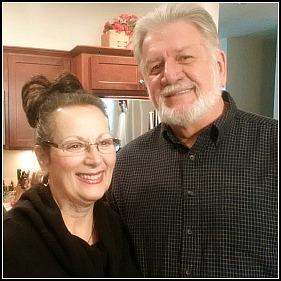
54 Grey Hawk Drive
Moved in November 30, 2015
Originally From: Both from Milford, MA
How They Met: Introduced by a friend; went to a birthday dinner together and really hit it off.
Previous Residences: Milford and summers in Sandwich.
What Kind Of Work Did You Do:
Louise - social worker for DSS; Jim - computer IT at Raytheon.
Why Southport: The only community we were interested in because of the amenities. We have cousins here, Ralph and Roseanne Francesconi, so we knew the community.
Like Best About Southport: The location. In East Sandwich you are much more isolated, and have to travel to shop. Nice group of active people. We love our condo.
Like Least: One car garage, not enough parking pads for second vehicles.
Want To Get Involved With: Louise - garden club, activities and events committee, women's coffee. Jim - cards, golf, pool.
Kathy & Ed Hubbard 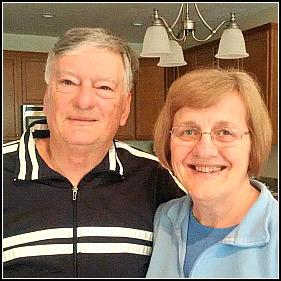
44 Grey Hawk Drive
Moved in December 31, 2015
Originally From: Kathy - Bedford, NH; Ed - Dover, NJ
How They Met: Friends fixed them up on a blind date in Boston. Ed was living in Philadelphia and visiting his college roommate in Boston; Kathy was attending Northeastern.
Previous Residences: Reston, VA and Londonderry, NH
What Kind Of Work Did You Do: Kathy - office manager, Boston Consulting Group and stay at home mother; Ed - director of regional VA office in Manchester, NH. Now works part time for H&R Block in Hyannis and writes a weekly column for fantasy baseball.
Why Southport: Active lifestyle. Were going to retire in Hilton Head SC but first grandchild was born and we decided to stay in New England.
Like Best About Southport: Friendly atmosphere. We can walk everywhere here. Looking forward to exploring the Cape.
Like Least: No complaints.
Want To Get Involved With: Golf, exercise classes, socials, ladies' and men's coffee.
|
|
MEMOIR
The Chicken Coop
by Roy Smith
|
Our village home was a neat, old cottage style house situated on a small lot, similar to those of our neighbors. We had a free-standing garage on the back of which my father had built a small chicken coop. During World War II, my father, like many others in the village, had a vegetable garden and usually kept a few chickens for eggs and the stew pot.
Shaded by an ancient spreading apple tree, the chicken coop sat on a concrete pad. It was painted white and had a recycled window with green shutters on either side of the center door. Inside, a roosting pole along the back wall provided a place for the hens to rest at night. Below this pole, a platform, slanted toward the front, caught their nightly droppings. One of my frequent chores was to scrape this surface clean every day, sprinkle it with lime, and add the waste to the compost bin. There were times, however, when the chicken coop sat empty after it had been scrubbed clean, whitewashed and aired, waiting for my father to decide when or if to adopt another small flock. On those occasions, we found other uses for the space.
As soon as my friend Dick and I had graduated to two-wheelers, we built small trailers to attach to our bikes, since we were often carrying some kind of found 'treasure' to or from home. We were familiar with virtually every corner of our neighborhood due to occasionally helping an older boy with his extensive daily paper route. Always scheming for ways to earn a little extra cash, we decided to use our new trailers to collect old newspapers and magazines from neighbors near and far.
The temporarily unoccupied chicken coop became our corporate office and sorting center. Our collections accumulated here until there was enough to load up my father's Studebaker sedan and make the Saturday morning trip to the paper and rag man in the city. We were paid pennies a pound and were quite happy with our profit.
A major side benefit to our labor was a large collection of wonderful magazines such as National Geographic, Popular Mechanics, Life and The Saturday Evening Post. We set the best magazines aside on the whitewashed droppings board at the rear of the chicken house, and on a rainy summer day or whenever we had time, we would relax and enjoy our library.
Seated on a couple of old lawn chairs, feet up on bundles of newspapers, bottles of Coke in hand, and with Lady, Dick's old beagle asleep on the floor between us, we would peruse our favorite magazines. Appealing pictures - many of Norman Rockwell's Post covers and exciting new automobile models - were cut out and pinned to the walls, along with the best pin-ups we could find.
Care had to be taken with the latter, as my mother was liable to pay an unannounced visit at any time. We knew that she liked Rockwell and usually viewed our other postings with a smile or laugh. We were always on the lookout for one of the rare "men's magazines" but never found any. We suspected that our neighbors were sorting their magazines very carefully before discarding them. Only after our best magazines were well thumbed would they be bundled up for the paper and rag man.
Today when I see a Norman Rockwell print it's like seeing an old friend. It brings back good memories of a much simpler era and afternoons spent in my father's versatile little chicken coop.
|
|
Contributors to the
April 2016 Edition of
Southport Village Voices
|

Lydia Biersteker
grew up in Somerville, MA. She met her husband Dale on the beach at Falmouth Heights in 1969, while he was stationed at Fort Devens. After Dale retired in 2005 from his executive position with the USPS, they moved to Vero Beach, FL but decided that they preferred New England. They moved to Southport in 2011. Dale plays golf, and Lydia likes gardening, walking, writing poetry and short prose, exploring genealogy, and lunching with friends. Together, they enjoy dining, exploring wineries and brew pubs, walking the trails of Cape Cod, traveling and playing with their grandkids, who live on the North Shore.
Bob Fulton 
grew up in Fairfield CT where he met Lynn in high school and later married her in 1967. After a tour of duty with the Army in Vietnam, he finished his BA degree at the University of Connecticut and then embarked on a 30-year career teaching history and social studies to middle school students in Storrs. Once retired, he taught at UConn, where both he and Lynn were part of a federal grant to improve the teaching of United States history. A sense of curiosity about the world and a shared love of history led them to travel extensively in the US, Canada and Europe, bicycling, backpacking and traveling by train. They settled in Pocasset 15 years ago, moved to Southport in 2015 and are doing their best to live happily ever after. You'll often find Bob on the golf course, in the pool or hot tub or walking around the village, ready to talk with everyone he meets.
Lynn Fulton 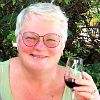
has lived in 32 different places before arriving in the summer of 2015 at Southport, most in New England, but there was also Tacoma and Quebec. She's been a waitress, hostess, bartender, ski lodge manager and chef, office worker, educator - high school, university and consultant, amateur architect and artist. Most of her pastimes have involved going from here to there - white water canoeing, kayaking, bicycling, hiking, climbing, backpacking, skiing and traveling. She's most proud of her 800-mile bicycle tour of the UK and the cross-country ski up and down Mt. Washington. She begins her seventh decade, having had both knees replaced, thrilled with the pool, hot tub, water aerobics and chair yoga at Southport, delighted with the social life and fascinating people.
Andy Jablon 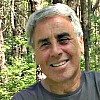
owns a television production company in Watertown that provides crews to shoot stories in New England for the major TV networks. As producer, he interviews all sorts of interesting people on a regular basis. His wife Tracy Tebbutt works at a cancer pharmaceutical company in Cambridge. Since July 2014, they split their time between Southport and Boston, depending on work schedules. Both are enthusiastic cyclists, riding along the Charles River to work in almost all kinds of weather. At Southport, they relax by walking, biking, playing tennis and soaking in the hot tub.
 David Kapp David Kappwith his wife Billie, moved from Connecticut to Southport in 2009. David retired from a career as a university library administrator, after working in the libraries at Brandeis, Harvard and the University of Connecticut. He was a building consultant for the planning of a number of major university libraries and was, for many years, the editor of Connecticut Libraries. Billie enjoyed a career as an educator and social sciences consultant. The Kapps are frequent visitors to Hawaii where their son and other family members live. Their daughter and grandson recently moved to Mashpee from the Big Island of Hawaii.
Tom Kelleher 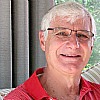
grew up in Lowell, MA and stayed in that area after marrying Kathryn, his "college sweetheart" and wife of 43 years. After raising a family of five children and somehow paying for five private college educations, Tom and Kathryn retired to Southport in August 2014. Tom pursued a career in public and private education that spanned 42 years. He was a teacher and administrator at Dracut High School and later principal at Nashua Catholic Regional Junior High in Nashua, NH. Upon retirement and prior to moving to Southport, Tom took on a "fun" job as a part-time museum teacher and history tour guide at Lowell National Historical Park. In addition to history, Tom's other passion is singing and playing guitar in various "open mic" and song circle venues in the Falmouth/Sandwich area. Tom also performs for patients at the Tradewinds Adult Day Care Center in Sandwich.
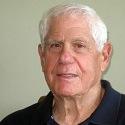 Bob Mendes Bob Mendesbegan his career as an advertising copywriter at Doyle Dane Bernbach in NYC before becoming senior vice president of marketing for a west coast department store chain. He left that position to start Pacific Sports, a sports and general marketing agency. There he developed "The Reading Team," a children's literacy program sponsored by the NFL and the American Library Association, using NFL players as literacy role models. Bob is the author of "A Twentieth Century Odyssey, the Bob Mathias Story." After retiring, he served as executive director of the Glendora, CA Chamber of Commerce. When grandson Adam was born, Bob and Bette moved to Cape Cod. He's had a number of part-time jobs, has written two more books, and volunteers. Bette serves on the Board of Governors and volunteers at the Falmouth Jewish Congregation. Their son Steve, a pediatrician, lives in Marion with his wife Sarah and their children; a second son, Jeff, practices law in Indianapolis.
Roy Smith 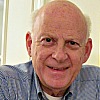
grew up in East and West Bridgewater, MA. He served as a corpsman in the US Coast Guard on the weather cutter USCGC Castle Rock and the icebreaker USCGC Eastwind, on voyages from the Arctic to the Antarctic. In his thirty-year career at the Woods Hole Oceanographic Institution he was initially a sea-going chemistry tech and later an administrator in the Geology and Geophysics Department. After retiring from WHOI, he was general manager of McLane Research Laboratories in Falmouth. Roy met his wife Cynthia at WHOI, where she worked summers while on teaching break. They moved to Southport two years ago and consider the choice one of their best. Since retirement both have volunteered at the Falmouth Service Center. Roy has charitable woodworking projects underway at all times and Cynthia is involved with various charities on the Upper Cape. They have two sons, Jason, an engineer at WHOI, and Aaron, a sculptor, and two beautiful granddaughters.
Special Thanks To
my proofreader Billie Kapp
|
|
|
|
|
|
|
|